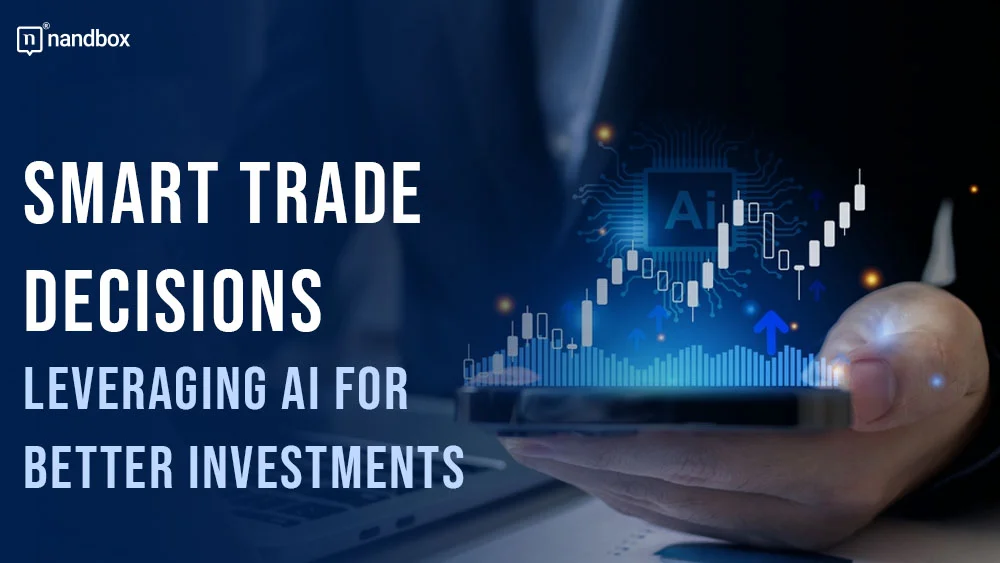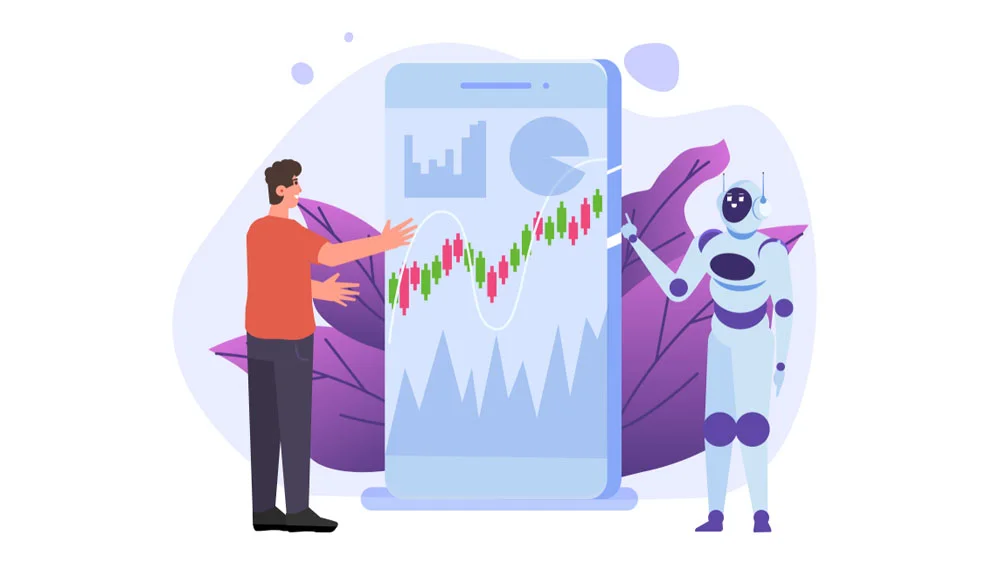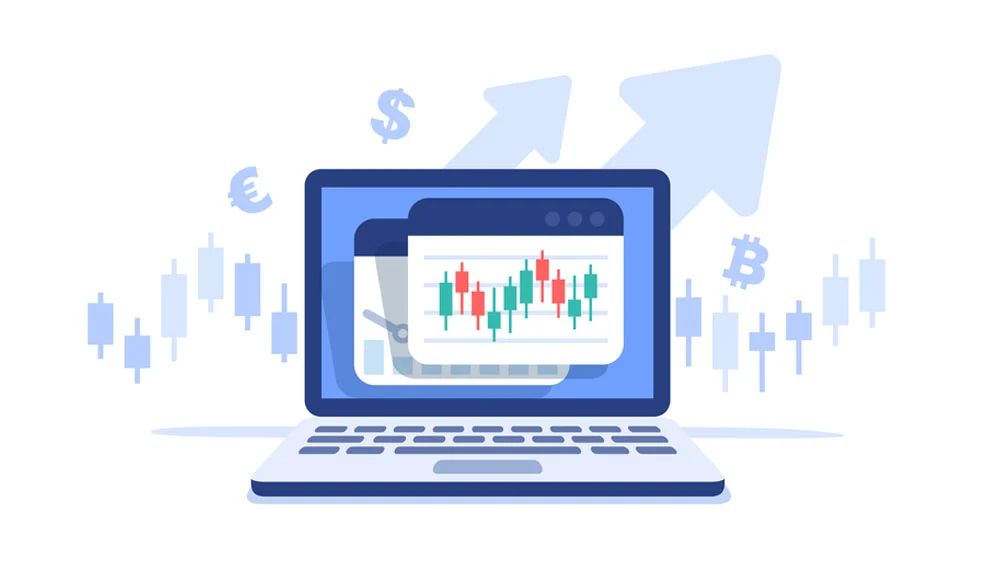Nowadays, artificial intelligence has become an industry mover across the world and finance and trading are no exceptions. Equipped with the power to analyze huge volumes of data, spot patterns, and predict changes, AI has equipped traders with the wherewithal to make informed and smart trade decisions. It truly marks the difference between being the best or near the top of one’s game in a market where milliseconds count and how one leverages artificial intelligence in trading. This article explains how traders can harness AI to make smarter decisions, elaborating on its various applications, benefits, and considerations.
The Role of AI in Trading and Making Smart Trade Decisions
AI plays several roles in trading, including algorithmic trading, predictive analytics, sentiment analysis, and risk management. It is now technologically possible to process large datasets and unlock insights that are beyond human capability, revolutionizing traders’ approach to the market.
Algorithmic Trading
algorithmic trading is probably the most prominent application of AI in trading. It allows AI-powered algorithms to execute trades at speeds and frequencies beyond the reach of any human trader.
These algorithms can analyze market conditions using advanced charting software, identify trading opportunities, and execute trades based on predetermined criteria—all within milliseconds. This allows not only for more efficiency but also for less human emotion like fear and greed-influenced trading.
Predictive Analytics
AI does quite well in recognizing patterns from historical data. This could be exploited to contribute toward predicting the future movements of markets.
More specifically, by analyzing past price movements and volumes of trading, among other market indicators, AI might project such forecasts that let traders make informed decisions. These predictive models may be further updated consistently with new data, hence setting adjustments in trading strategy in real time.
Sentiment Analysis
AI applications in the analysis of unstructured data, news stories, social media, and financial reports can also be used in estimating market sentiment. Knowing how other market participants feel about a certain asset or the state of the whole market, one may act accordingly based on prevailing sentiments. This can help greatly in spotting potential market-moving events even before they happen.
Risk Management
AI will also prove to be of great use in Risk Management. The analysis will have an assessment of plausible risks associated with different assets that a trader has in their portfolio and thus help in making more balanced investment decisions. That would include things like recognizing overexposure to specific risks on some assets and rebalancing to improve chances of limiting losses. For investors exploring precious metals as part of their portfolio diversification strategy, sourcing products from a trusted American Gold Eagle coin dealer can help ensure authenticity and competitive pricing—vital factors when leveraging both traditional assets and advanced AI-driven market analysis.
Advantages of Using AI in Trading
Integrating AI with trading offers multiple benefits, from improved efficiency and accuracy to enhanced data handling and risk management. Some of the key advantages are stated here as follows:
- Speed and Efficiency: AI can process vast reams of data far faster than any human trader ever could. This is particularly relevant when one is dealing in high-frequency trading, in which decisions need to be made in fractions of a second.
- Data-Driven Decisions: AI-driven trading systems rely more on data than on instinct. Eliminating the emotional component in trading decisions may enable AI to present traders with a route. Through which they can be more rational and objective. It is in this regard that a more reliable and productive way of trading could be established.
- Scalability: AI systems can be scaled to analyze several markets and assets at the same time. This is very instrumental in cases where one needs to track different markets around the world or run large portfolios.
- Customization: Additional tuning can be done to tailor the needs of every trader or investment strategy. From conservative, low-risk traders to very aggressive investors looking to maximize their returns, AI systems can be adjusted for these types of traders’ preferences.
- Continuous Learning: AI systems continuously learn from new data and adapt to market changes. This keeps the strategies of trading continuously evolving so that they are relevant and effective in application. With shifting markets, AI can spot new trends and rectify predictions to help traders always stay ahead of their competition.
AI and Smart Trade Decisions: Challenges and Considerations
While the benefits are significant, traders must also be aware of the challenges and considerations involved in using AI. Grasping these challenges is important in using AI effectively for trading.
Data Quality
How good can the data really be if it’s only as good as the system? In case the quality of data that was used in training the AI system is low, less accurate predictions will be obtained, leading to less-than-optimal trading decisions. Traders, therefore, have to ensure that their AI systems are fed with high-quality relevant data to get the best results.
Overfitting
This is the case where the AI model has been fitted too tightly to the historical data, hence very bad performance on new, unseen data. One gets a model that works well in backtesting but goes haywire in a real trading environment. Therefore, traders have to test the created AI models for overfitting on out-of-sample data regularly.
Compliance
The regulators have long since targeted AI trading. So the traders should very well be sure that their AI-driven strategies fall within the ambit of the relevant laws and regulations. This is to say openness to scrutiny, as far as how AI models are making decisions, should be maintained. Additionally, They need to ensure they aren’t trading manipulatively/unethically.
Ethical considerations
Many ethical considerations are around AI in trading, most notably market manipulation and fairness of approach. As such, traders should consider the broader impact their AI-driven strategies could have on the market and not, by any stretch of the imagination, contribute to market instability or unfair practices.
Cost and Complexity
The act of designing AI systems for trading comes at a costly and complex price. Huge investments are required both in terms of technology and expertise. Traders have to weigh probable benefits against costs and see if they have what it takes to effectively employ and support AI systems.
Integrating AI into Your Smart Trade Decisions Strategy
The steps to applying AI to work on your trading strategy include the following:
Define Your Goals
In the very beginning, traders must clearly define their goals for using AI. Are they looking to improve trade execution speed, enhance predictive accuracy, or be in a better position for risk management? Obviously, these objectives the understood ones, shall definitely help in choosing proper AI tools and strategies.
Selection of the Appropriate AI Tools
From off-the-shelf to fully custom-built, many varieties of tools in artificial intelligence are at the command of a trader. Desired is the ability to pick those that align with the goals of a trader and have a provable record of success in the markets.
Start Small
The first entry into AI, if one is entering for the first time, may be advisable with just a small portion of his or her portfolio. This way, one will have the chance to progressively build confidence in the technology, therefore cutting down on associated risks.
Monitor and Adjust
AI systems are not set-and-forget. Traders should continuously monitor the performance of their AI-driven strategies and carry out continuous adjustments considering market environment changes and models refreshing with new data.
Seek Expertise
Dealing with AI in trading can get quite complex. Hence, seeking expertise from specialists in AI or even forming alliances with firms specializing in AI-driven trading solutions would be essential in ensuring effectiveness in the use of AI and avoiding related pitfalls.
Conclusion
AI, therefore, is going to revolutionize the trading landscape since it provides powerful tools for analyzing very large datasets. In using AI for trading, an individual trader can make smart trade decisions, manage their risks, and keep up with markets that are becoming faster in the financials. However, the integration of AI into trading strategies must consider data quality, regulatory compliance, and ethical implications. It is with no doubt that the future of trading will be cast by AI as it evolves further. This will allow traders to become smarter in making more informed decisions.
FAQs
How does AI help one make smarter trade decisions?
AI provides aid in terms of analyzing large volumes of data, spotting patterns, and having a view of market moves for traders to make more informed and data-driven decisions.
Can AI completely replace human traders?
While AI can bring efficiency and accuracy to trading, it is unlikely to totally replace human traders. For the simple reason that human supervision and decision-making will always have a role to play.
What are some of the risks associated with trading using AI?
Risks associated with data quality, overfitting, compliance issues such as regulatory concerns, and ethical considerations all require mastery in risk management.





